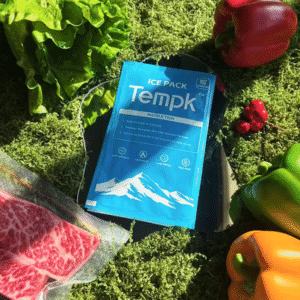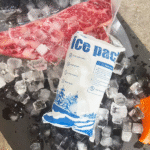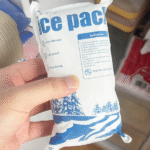High Quality Dry Ice Pack: How to Choose in 2025
If you ship temperature‑sensitive goods, a high quality dry ice pack is your simplest way to hold sub‑zero conditions for 24–96 hours. In this guide, you’ll learn how to compare materials, calculate quantity, pass audits, and control total cost. You’ll also see 2025 trends, from greener liners to smarter data loggers, so you can ship with confidence.
-
How do you define a high quality dry ice pack for reliable −78.5°C hold time?
-
How do you size a high quality dry ice pack for 24–72 hours without waste?
-
What regulations, labeling, and safety steps apply to a high quality dry ice pack shipment?
-
How to weigh cost, sustainability, and performance across lanes and seasons
-
How to validate your packout and win fewer temperature excursions
What defines a high quality dry ice pack in 2025?
A high quality dry ice pack maintains target temperature, fits your lane profile, meets safety rules, and proves performance in validation. Look for dense pellets or blocks with low sublimation rate, strong vapor‑permeable wrap, and packaging that prevents movement. Choose insulated shippers rated for extreme lanes and confirm documented hold times that match your routes and volumes.
A better pack goes beyond “cold.” You need predictable cold. That means consistent pellet size, clean CO₂ purity, and a wrap that releases gas while controlling frost and debris. Your high quality dry ice pack should include labeling for UN 1845, clear mass per pack, and guidance on venting. In practice, this reduces failed deliveries, claims, and wasted product for biologics, lab samples, seafood, and premium desserts.
How do materials influence a high quality dry ice pack?
Good packs use food‑grade CO₂ and tight pellet size ranges. A high quality dry ice pack uses a durable, breathable film that resists tears when handled. Block formats hold longer; pellets fill voids better. Hybrid formats—pellet core with semi‑rigid sleeves—combine both benefits. Pack wraps should shed less dust, keeping boxes clean and easier to process in receiving.
| Material or Feature | Typical Benefit | Typical Trade‑off | What it means for you |
|---|---|---|---|
| Blocks (2–10 lb) | Longer hold time | Less flexible fit | Fewer SKUs and longer trips |
| Pellets (3–16 mm) | Void fill and faster pull‑down | Slightly faster sublimation | Better for uneven loads |
| Hybrid sleeves | Balance time and fit | Higher unit cost | Strong cold + efficient packing |
| Vapor‑permeable wrap | Releases CO₂ safely | Needs intact seams | Safer in transit and storage |
Practical tips for picking materials
-
For biologics: Use blocks or hybrid sleeves in a tight shipper to hold deep‑frozen conditions.
-
For meal kits: Use pellets to fill voids around trays; combine with phase‑change gel for shoulder seasons.
-
For seafood: Line the base with blocks, then top with pellets to speed pull‑down and avoid warm spots.
Real‑world example: A clinical trial site replaced loose pellets with hybrid sleeves in a small shipper. Hold time increased by one full delivery day while dry ice mass decreased by 15%, cutting courier surcharges and re‑icing events.
How do you size a high quality dry ice pack for 24–72 hours?
Start from lane hours, payload mass, starting temperature, and shipper insulation. Then calculate the needed dry ice mass and convert it to the number of packs. Oversizing raises cost and risk; undersizing raises excursions and chargebacks. A high quality dry ice pack vendor should provide sizing tables and seasonal adders.
A quick rule: plan for a steady sublimation budget across the full route. Add contingency for delays and peak season. Validate in summer and winter to bracket the extremes. If your payload starts warmer than ideal, add a pull‑down factor or pre‑condition it to avoid wasting dry ice mass.
A simple sizing method for a high quality dry ice pack
Use this three‑step method as a practical guide:
-
Define lane: door‑to‑door hours + worst‑case delay (e.g., 48 + 12 = 60 hours).
-
Estimate loss: shipper heat gain + opening events + handling.
-
Convert to mass: translate the energy budget into pounds or kilograms of dry ice, then round up to available pack sizes.
Sizing table you can adapt
| Target Hold Time | Basic Shipper | Premium Shipper | Ultra Shipper | Your take‑away |
|---|---|---|---|---|
| 24 hours | 3–4 lb (1–2 packs) | 2–3 lb (1–2 packs) | 2 lb (1 pack) | Premium/Ultra reduce ice and weight |
| 48 hours | 6–8 lb (3–4 packs) | 5–6 lb (2–3 packs) | 4–5 lb (2–3 packs) | Add 10% for summer lanes |
| 72 hours | 10–12 lb (5–6 packs) | 8–10 lb (4–5 packs) | 7–8 lb (3–4 packs) | Use blocks + pellet topper |
| 96 hours | 14–18 lb (7–9 packs) | 12–15 lb (6–7 packs) | 10–13 lb (5–6 packs) | Validate with data loggers |
Note: These are planning ranges. A high quality dry ice pack supplier should provide lane‑specific data and help you validate.
What regulations and safety steps apply to a high quality dry ice pack shipment?
Dry ice is classified as a dangerous good (UN 1845), so labeling and venting are mandatory. A high quality dry ice pack should arrive with clear labeling guidance, ventilation instructions, and training notes. In air transport, follow air carrier limits and package venting rules. On the ground, ensure vehicle ventilation and worker PPE—insulated gloves and eye protection.
Use packaging with designed vent paths. Never seal dry ice in an airtight container. Document your packout. Keep SDS on file. Train teams to handle CO₂ gas safely in small rooms, coolers, and vehicles. A better pack reduces dust, avoids liner tears, and keeps labels readable during condensation.
Compliance checklist for a high quality dry ice pack
-
UN 1845 marking with net mass of dry ice
-
Class 9 label where required
-
Package venting and orientation
-
Documented packout SOP and photos
-
SDS available for inspectors and receiving
-
Training records for handlers and packers
| Requirement | Air Shipments | Ground Shipments | Why it matters |
|---|---|---|---|
| UN 1845 label | Always | Often | Signals CO₂ hazard quickly |
| Net mass on package | Always | Recommended | Helps responders and audits |
| Venting | Always | Always | Prevents pressure build‑up |
| Driver instructions | Per carrier | Yes | Safer deliveries and fewer claims |
How does a high quality dry ice pack lower total cost?
You save money when cold is predictable. A high quality dry ice pack lowers re‑icing, cuts excursions, and reduces chargebacks. It also trims courier surcharges by using fewer pounds with better insulation. Add a slim data logger and you can defend shipments with facts, not guesswork.
Look at Total Landed Cost: dry ice + packaging + extra handling + reshipments + claims. The cheapest pack per unit can be the most expensive per delivery if it drives failures. A premium shipper and better pack often pay for themselves by avoiding one ruined payload.
Cost levers you can control
-
Right‑size mass. Avoid 20–30% overfills common in “just in case” packouts.
-
Upgrade insulation. Better R‑value cuts pounds and courier fees.
-
Consolidate SKUs. Fewer pack sizes reduce training time and picking errors.
-
Use sleeves or blocks. They resist loss during handling and slow sublimation.
-
Add a data logger. Prove compliance and reduce disputes.
How do you compare suppliers of a high quality dry ice pack?
Ask for data, not adjectives. A credible high quality dry ice pack supplier offers CO₂ purity specs, pellet size distribution, wrap permeability, and seasonal hold‑time charts. They provide lane modeling, validation support, and replenishment SLAs. They can ship from multiple hubs to reduce transit and loss.
Supplier scorecard (copy and adapt)
| Criterion | Minimum Acceptable | Best‑in‑Class | What you gain |
|---|---|---|---|
| CO₂ purity | Food‑grade | Pharmaceutical‑grade | Cleaner payload environment |
| Pellet variance | ±3 mm | ±2 mm | Consistent packouts |
| Wrap durability | Single seam | Reinforced seams | Fewer tears and dust |
| Data support | Static spec sheet | Lane modeling + validation | Faster approvals |
| Hubs & lead time | 1–2 hubs | 3+ regional hubs | Fresher ice, lower loss |
Practical advice when sourcing
-
Request three recent validation summaries matching your lanes.
-
Ask for next‑day lead times within your region.
-
Verify SDS and training materials are current and easy to read.
How do you validate a high quality dry ice pack?
Validation proves the packout works before you scale. Use at least two seasons (summer and winter), test your longest lane, and include a delay scenario. Each run should include a data logger placed near the payload’s warmest point. Your high quality dry ice pack should pass without manual re‑icing.
A lean validation blueprint
-
Define success: temperature band and hours, plus max allowed spikes.
-
Build SOP: step‑by‑step packout with photos.
-
Run tests: normal lane + worst‑case delay.
-
Analyze data: mean, min, max, time over threshold.
-
Lock SOP: train teams and audit quarterly.
Case study: A diagnostics company validated a new premium shipper with hybrid sleeves. They cut dry ice mass from 12 lb to 8 lb for a 48‑hour lane and achieved zero excursions across 40 pilot shipments.
Interactive: the “COLD” decision tool
Use this quick self‑assessment to decide if you need to change your packout. Circle the first “No” you hit.
-
C — Consistency: Does your high quality dry ice pack deliver the same hold time every week?
-
O — Overhead: Are you spending less than 10% of order value on packaging + courier surcharges?
-
L — Logistics: Can every site receive and store dry ice safely with clear venting?
-
D — Data: Do you have lane‑specific validation within the last 12 months?
If you answered “No” to any item, run a small validation or request supplier support.
How do you store and handle a high quality dry ice pack safely?
Ventilation and PPE come first. Store packs in an insulated, vented container away from confined spaces. Train staff to use cryogenic gloves and eye protection. Never put packs into sealed jars or coolers. A high quality dry ice pack should include guidance on safe handling and replenishment intervals.
Receiving and staging checklist
-
Inspect wrap integrity and label legibility on arrival.
-
Stage in a ventilated area; avoid freezers with poor venting.
-
Track pack age and rotate FIFO.
-
Keep packs off damp floors to reduce frost and sticking.
-
Dispose of remnants by letting them sublimate in a ventilated area.
Sustainability: can a high quality dry ice pack be greener?
Yes, you can reduce footprint without risking temperature. Switch to better insulation to use fewer pounds. Consolidate SKUs to cut waste. Choose recyclable liners and right‑size shippers. Some teams blend a high quality dry ice pack with phase‑change materials (PCMs) during shoulder seasons to reduce total CO₂ usage.
Practical sustainability moves
-
Upgrade to high‑R liners and lower dry ice mass by a pound or two.
-
Shift from EPS to recyclable shippers where lanes allow.
-
Use reusable payload trays to reduce small plastics.
-
Validate a PCM + dry ice hybrid for near‑frozen products.
2025 developments and trends for dry ice packouts
In 2025, cold chain teams favor blended packouts, smarter monitoring, and lighter, recyclable shippers. A high quality dry ice pack now often ships with a low‑cost USB logger and printed QR SOP. Carriers continue to tighten handling windows, so shipper upgrades and better wraps are trending. Teams also pursue vendor networks with regional hubs to reduce transit loss and improve freshness.
What’s new at a glance
-
Hybrid formats: Sleeves and semi‑rigid packs balance hold time and fit for diverse SKUs.
-
Smart data: Affordable loggers and QR SOPs simplify audits and training.
-
Greener liners: Recyclable materials replace EPS in moderate lanes, shrinking waste streams.
Market insight: Shippers are consolidating to fewer pack sizes while adding small seasonal adjustments. This tightens training and reduces picking mistakes. Demand for 48‑ to 72‑hour lanes rises with home diagnostics and specialty foods, making a high quality dry ice pack even more valuable.
Frequently Asked Questions
How cold is a high quality dry ice pack, and how long does it last?
It targets −78.5°C and typically holds for 24–96 hours, depending on shipper and mass. Add 10–20% contingency for delays, especially in summer lanes.
Can I combine a high quality dry ice pack with gel packs or PCMs?
Yes. Use dry ice for deep‑frozen and add PCM for shoulder seasons or mixed‑temp payloads. Validate both together before scaling.
What training do teams need to use a high quality dry ice pack?
Cover PPE, ventilation, labeling, and storage. Keep SDS on file, and refresh training yearly or when SOPs change.
Is there a maximum amount of dry ice I can ship by air?
Yes, carriers set limits and require venting and UN 1845 labeling. Check your courier’s most recent rules before booking.
How should I dispose of a high quality dry ice pack after delivery?
Let remaining dry ice sublimate in a ventilated area, then recycle packaging when possible. Avoid sinks and closed containers.
Does a high quality dry ice pack work for international shipments?
It can, but you must meet customs and airline rules and allow longer transit. Validate with your longest lane and seasonal extremes.
Summary and recommendations
A high quality dry ice pack delivers predictable sub‑zero performance, passes audits, and lowers total cost. Size by lane hours and shipper class, then validate in two seasons. Upgrade insulation to reduce pounds, and use sleeves or blocks to slow loss. Document SOPs, label correctly, and train teams on safety. Add low‑cost data loggers to defend deliveries.
Next steps:
-
Map your top three lanes and hours.
-
Pilot two packouts with a high quality dry ice pack and a premium shipper.
-
Validate summer and winter with data loggers.
-
Lock your SOP and train teams.
Call to action: If you need help modeling lanes or choosing SKUs, request a free packout review from Tempk.
About Tempk
We are a cold chain solutions team focused on practical performance. Our packouts pair a high quality dry ice pack with premium insulation and simple SOPs. We support lane modeling, seasonal validation, and regional fulfillment for fresher, safer shipments. Customers typically see fewer excursions and faster approvals when switching to our standardized pack families.
Want expert help? Contact Tempk for a lane review and pilot packout.
























